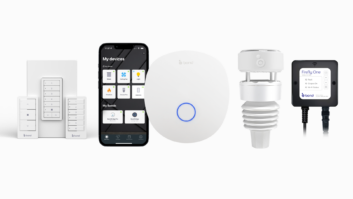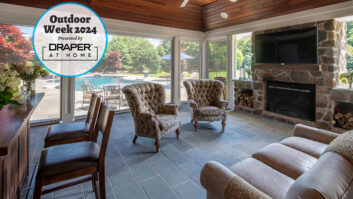With more and more Wi-Fi devices being introduced to the home, we are frequently asked about the merits of running low-voltage wire, versus an all-wireless configuration. Lennar’s decision to build wireless Wi-Fi-Certified homes has added impetus to the general consumer’s belief that a wireless home can be as good as a wired home.
While every home should certainly have a robust wireless backbone, it will always be preferable to hard wire fixed intelligent electronic devices in the home for the following reasons:

cyberManor has a new, pre-wired whole-house showroom without insulation and sheetrock, to give partners a detailed and transparent view of the thought that should be given at this stage in the building process.
All wireless devices need power. If power is provided by a battery, it will have to be recharged or replaced. The most reliable long-term solution for power will always be from a copper line–either PoE or line voltage. In new construction or extensive remodels where one has to run new electrical lines, why wouldn’t you also run low-voltage wire at the same time?
Wired speeds will always be greater than wireless speeds. Ethernet is just plain faster than Wi-Fi; there’s no getting around that fact. Wi-Fi has gotten significantly faster over the last few years, thanks to new standards like 802.11ac and 802.11n, which offer maximum speeds of 866.7Mb/s and 150Mb/s, respectively. On the other hand, a wired Ethernet connection can offer speeds up to 10Gb/s with Cat-6 cabling. And, unlike with Wi-Fi, that speed is consistent.
Latency and packet loss of Wi-Fi will always be greater than wired Ethernet. Mike Maniscalco of Ihiji wrote a great column on latency and packet loss in the latest issue of CEDIA Communicates. In it, he states that with a round trip-latency of just 30ms, your effective data throughput in a 100Mb/s Ethernet line can drop to just 16Mb/s–below the 25Mb/s throughput that Netflix recommends for streaming 4K HDR content. Given that wireless latency is often an order of magnitude higher than wired latency, its easy to see why the streaming of high definition content around the home will always be a better experience on a wired backbone.
Wi-Fi is subject to a lot more interference than a wired connection. The layout of a home, objects that can block the wireless signal, interference from electrical devices or a neighbors’ Wi-Fi network–all these things contribute to Wi-Fi being generally less reliable than a wired network.
Security of home data will always be better on a wired backbone. I sat on a security panel at CEDIA in September with veteran Mario Leone of Electronic Solutions Company, and he proclaimed that his company will not install wireless systems in his client’s homes due to the inherent security weaknesses of a wireless infrastructure. While that position may be extreme, it highlights the fact that all wireless subsystems will always be less secure than wired systems. It is our responsibility to program and use best practices in our wireless infrastructures to minimize the vulnerability of these wireless systems in our client’s homes.
Demonstrating the Difference
To clearly demonstrate the benefits of a well engineered, pre-wired home to our builder, architect, and interior design partners, we have built a new, pre-wired whole-house showroom where we purposely have not installed the insulation and sheetrock. This gives our partners a detailed and transparent view of the thought that should be given at this stage in the building process. It includes fiber and open conduit runs (for any future low-voltage wiring runs); wiring for multi-zone whole-house audio; structured Cat-6 wiring for data ports throughout the home; power over Ethernet (PoE) wiring to exterior cameras, in-wall control tablets, wireless access points, and future PoE based lighting; centralized whole-house lighting and lighting control keypad wiring; and power and control wiring to motorized window treatments, among many other things.
All of these solutions for our clients’ new or remodeled homes are best implemented if this infrastructure is installed prior to insulation, sheet rocking, or the pouring of cement patio and driveways. As specialists in home technology, it is critical that we clearly demonstrate our expertise in this area to our clients–and the proper pre-wiring of their homes represents the foundation of a well-engineered smart home.






